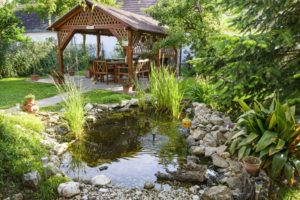Most property buyers are now leaning towards historical rather than modern homes. The exceptional architectural details in these homes, combined with the durability and strength of the building materials used are some of the factors that have triggered this shift. In most cases, some of the features in historic homes might need some retouching. Unlike when renovating other properties, however, you should aim to retain the look of your historic property as much as possible.
Some property owners might opt out of seamless gutter installation even for rundown gutter systems as they are apprehensive about destroying their property’s overall exterior look. With the right picks and the expert installation of your gutters, however, you can maintain the home’s look. Leaving the rundown gutters as they are only exposes your property to considerable damage and ruins its exterior look. The following are the standard options used for gutters in historic homes.
K-Style Gutters
These came into widespread use around the 1940s and have become the predominant gutter style nowadays. K-style gutters are generally made of aluminum and have a crown molding that resembles the ogee gutter profile on their exterior face. Other than aluminum, you can opt for vinyl or copper for the gutters without affecting the look of your home. Copper has a high aesthetic appeal and will add some class to your home. Vinyl, on the other hand, is inexpensive but has a somewhat short lifespan. K-style gutters are available in varying styles, though five to six inches is the standard size for most historic homes. The gutters suit Greek revival, Georgian, mid-century modern, and colonial revival home.
Half-Round Gutters
These were popularized when metal rolling machines came into existence around the early 1900s. Half-round gutters were available in all materials in the past. These days, they are predominantly made of aluminum, owing to the metal’s exceptional performance and low cost. The gutters feature a half-round design with a double or single bead rolled edge for extra strength. The double beaded style suits the mission and open rafter bungalow home styles. The single beaded style includes a tall backside to avert overflow into your cornice and fascia.
Cast Iron Gutters

These were used from the 1820s to the 1870s. While they are not as popular as other alternatives due to their challenging installation and considerable weight, some of the houses constructed in the mid-19th century have cast iron gutters. The gutters have a similar profile to that of simple U-shaped boxes and k-style gutters.
Wood Gutters
These are at times called ‘’box’’ or ‘’Yankee’’ gutters and were common from the 1600s to around 1910. The wood used in this case is treated for rot resistance and at times, lined with sheet metal. V and U-shaped gutters are the characteristic shapes of wood gutters. They fit the same historic home styles like those of the k-style gutters since the latter attempt to mimic the look of conventional wood gutters.
The above alternatives will guarantee the look of your historic home is preserved even with a gutter renovation. Before starting the installation, however, you should check your local building regulations. Some councils will have restrictions on the gutters you are permitted to install in certain historic homes.














